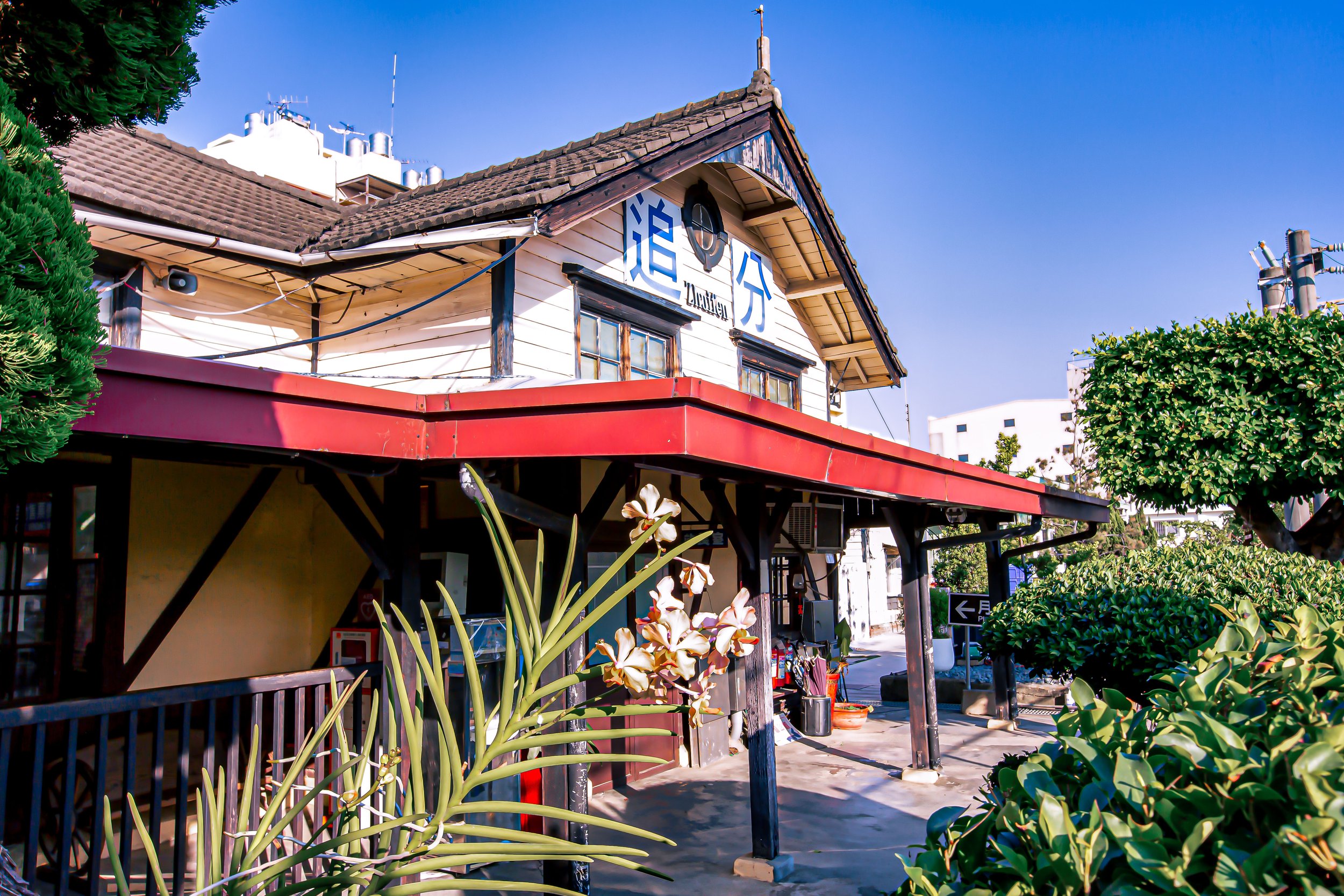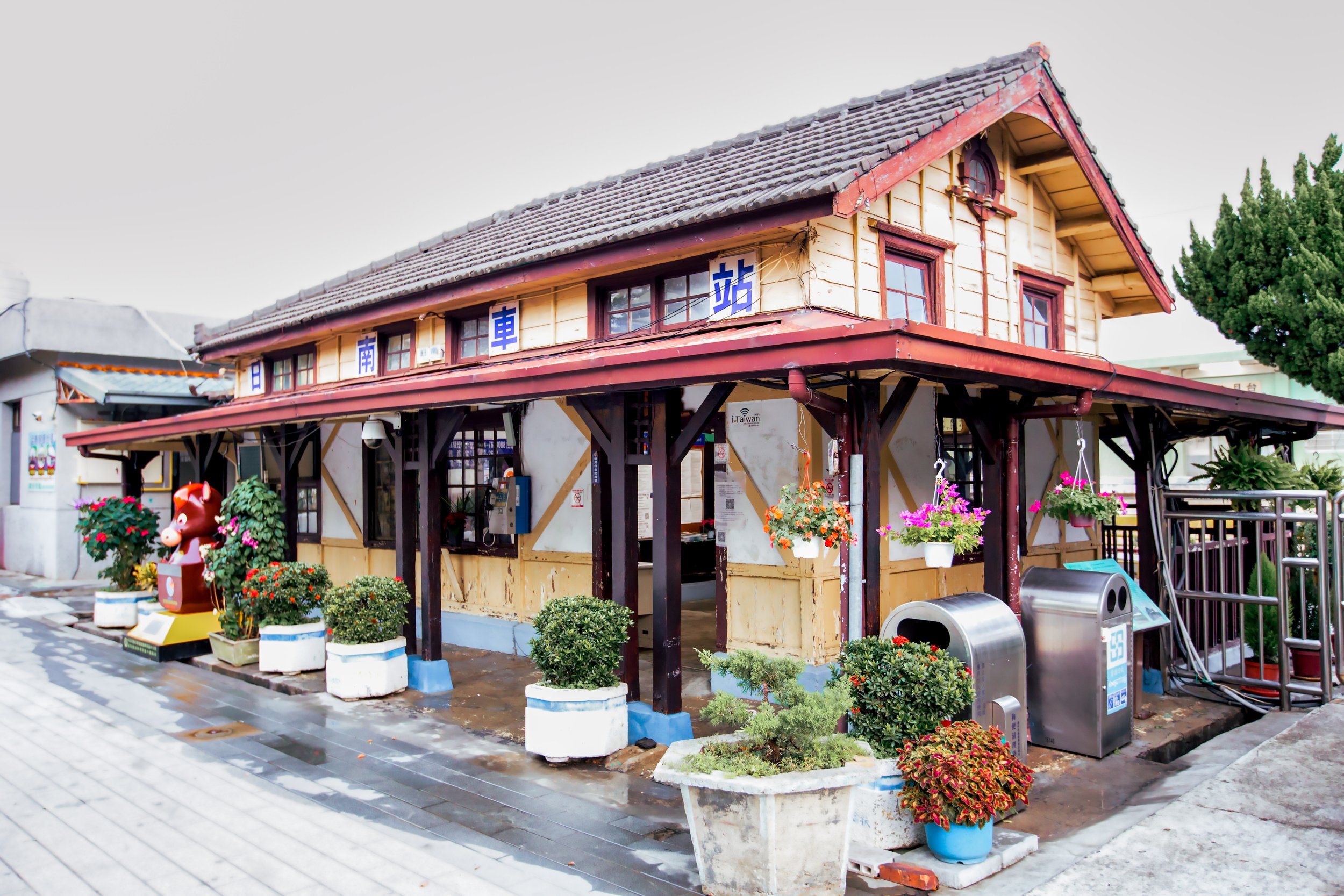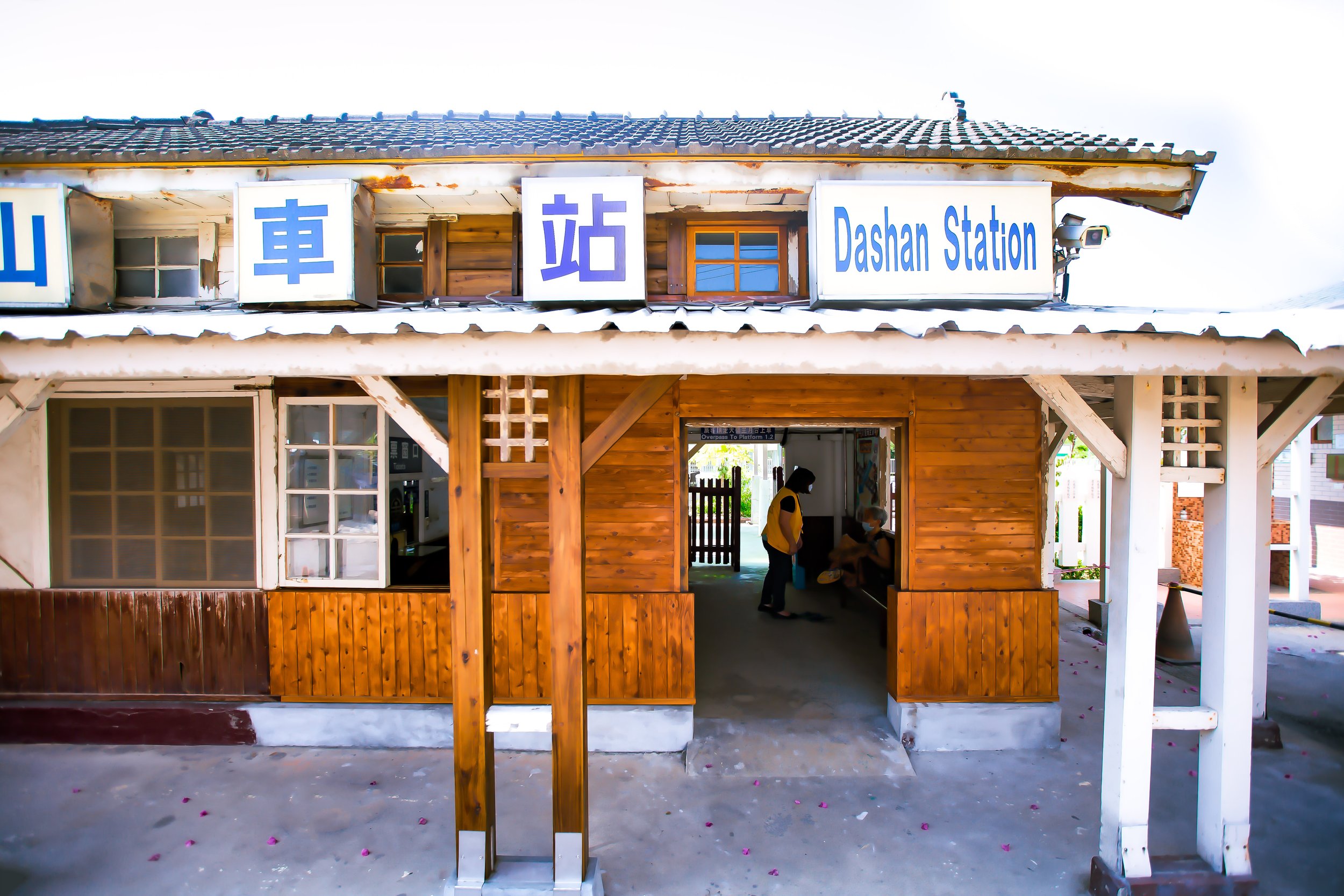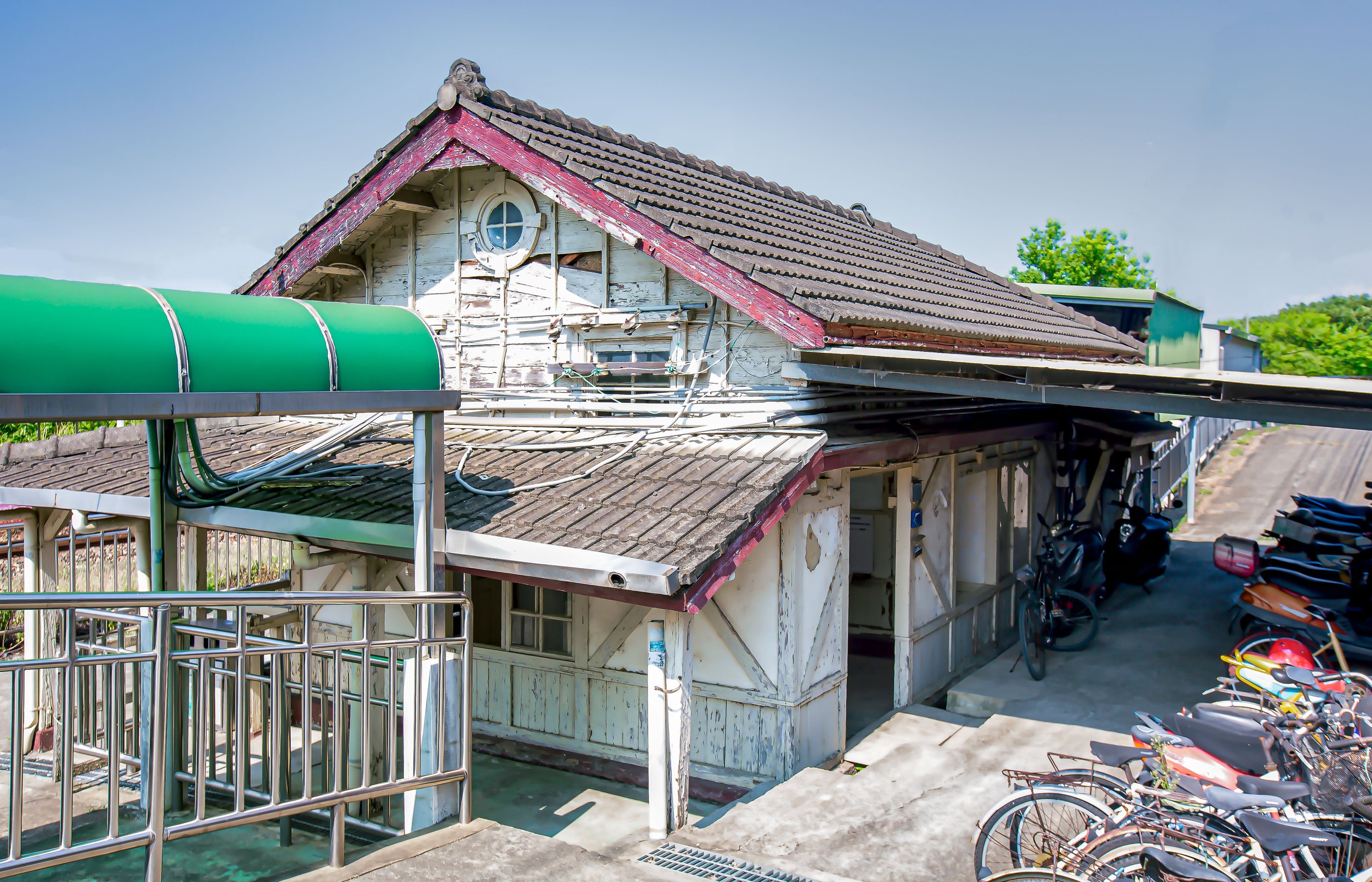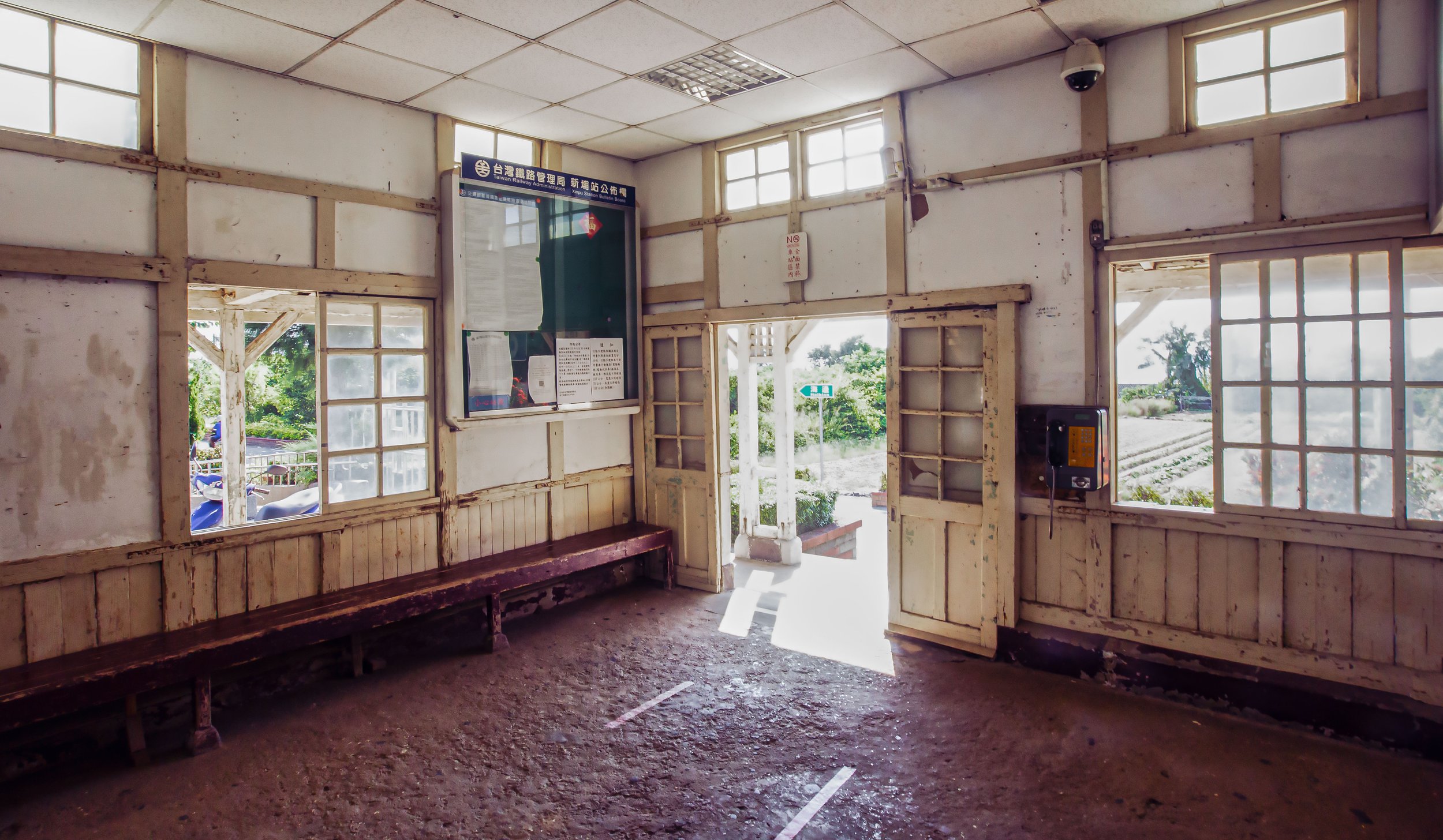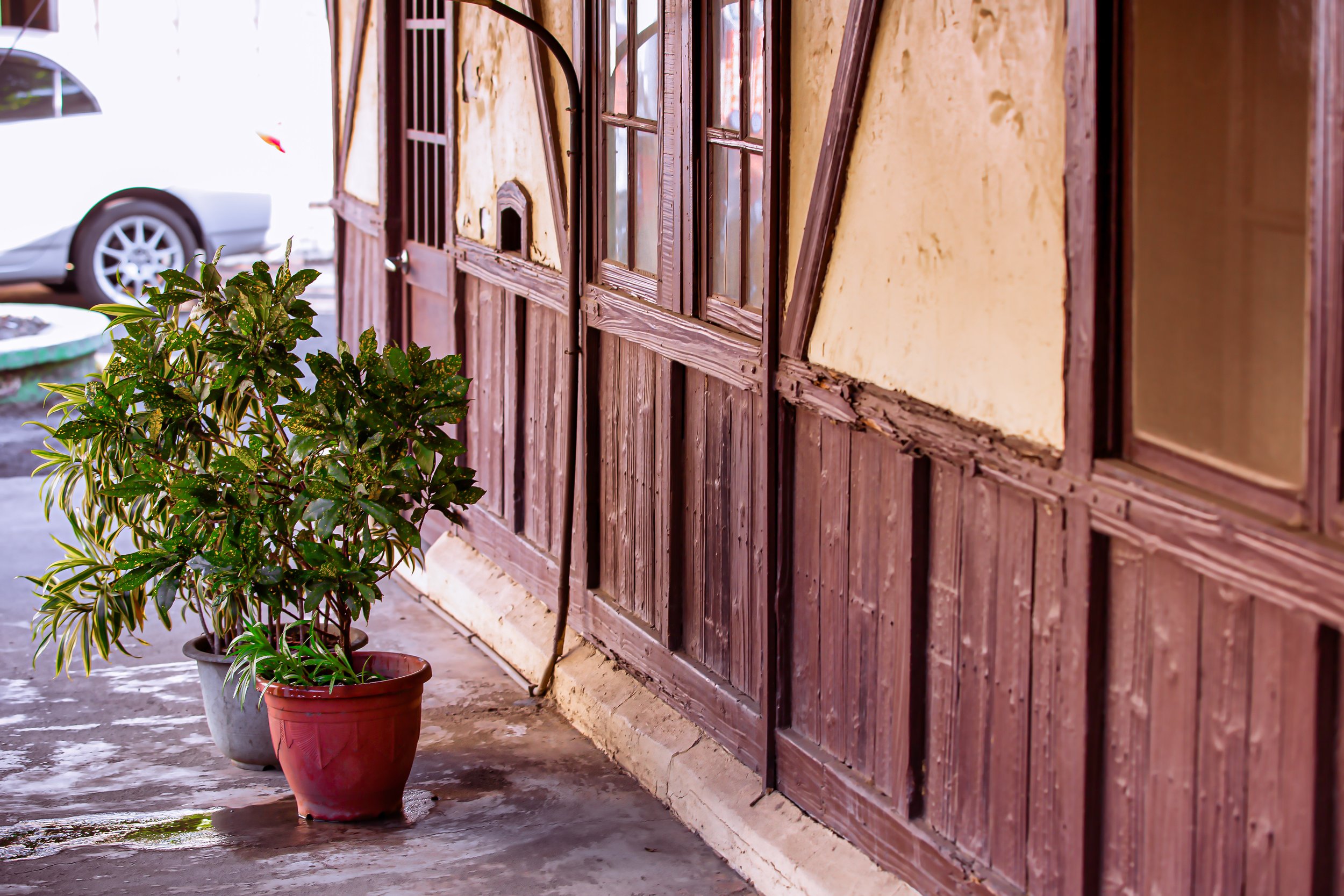Miaoli’s Jiali Mountain has been a hike that has been at the top of my list of trails to check out for quite some time, but has sadly stayed that way due to it being somewhat inaccessible, that is, if you don’t have your own means of transportation - So, when a good friend of mine sent a late night text asking: “Jialishan, this Sunday, you in?”, I didn’t need to take any time to consider, it was an automatic yes.
And, let me tell you, I was so happy that I was able to add this one to my list of mountains in Taiwan that I’ve hiked.
The weather that day was absolutely perfect, the light on the trail was beautiful, the scenery on the peak was spectacular, and I also met some cool new hiking friends in the process!
Nicknamed Taiwan’s Mount Fuji (台灣富士山), with a peak reaching 2220 meters, Jialishan is one of the highest of Taiwan’s ‘100 Minor Peaks’ (小百岳), a group of mountains that range between elevations of 2600m at the highest and 20m at the lowest. Unlike Taiwan’s highest peaks, however, each of which reach over 3000m in height, the ‘Minor Peaks’ are a constantly evolving selection of popular day-hikes that range from entry-level hikes, with easy access to public transportation, to hikes like this one that require a little more skill and effort to complete.
Whereas the major peaks often require permits and a commitment of several days to complete, many are surprised to learn that they may have already completed some of the ‘Minor Peaks,’ some of which include Taipei’s Qixing Mountain (七星山), Jiantan Mountain (劍潭山) and the so-called ‘Four Beasts Mountains’ (四獸山). So, if you’ve found yourself on the peak of Taipei’s Elephant Mountain (象山) enjoying the spectacular views of the Taipei cityscape, you’ve already been on at least one of the ‘minor peaks’.
In each case, the hikes mentioned above are easy to get to, and don’t particularly require too much effort or skill to complete. That being said, there are a number of hikes on the list, mostly located in central Taiwan, that are considerably more difficult, and require a lot more effort. At 2663m, the highest mountain on the list, Mount Daito (大塔山), might not be the most difficult to complete, but still, it takes the better part of a day. The fifth highest mountain on the list, Jialishan, similarly takes the better part of a day to complete, but isn’t exactly the easiest to reach, nor is it the easiest for most people to complete.
Nevertheless, the challenges you face while hiking the trail aren’t likely to outweigh the rewards as you’ll enjoy dense forests of Japanese cedar, a historic timber railway, and stunning views of the several mountain ranges.
Hiking the mountain on a clear day, we were able to enjoy a view of Taiwan’s second-highest peak, Snow Mountain (雪山), which was covered in snow at the time. At the same time, thanks to the peak being the highest in the area, we were also rewarded with 360 degree views of the Central Mountain Range, which includes the Alishan Mountain Range (阿里山山脈) to the south, where Mount Daito, mentioned above is the highest peak.
Given that I love hiking Taiwan’s mountains, and the hike also included a walk along a historic Japanese-era railway, this is exactly the kind of experience that the doctor ordered after a long, rainy and cold Lunar New Year holiday. The popularity of this hike shouldn’t surprise anyone as all of your sweat won’t compare to the rewards you’ll receive at the peak.
Today, I’m going to introduce the trails on the hike, talk a bit about the railway you’ll see along the way, and offer information about how to get there so that anyone wanting to enjoy the hike has the information they need to get there. Unfortunately, I have to preface this by letting you know that for most foreign visitors, getting to the trail isn’t that easy, and its likely that you’ll need help in that department, so I’ll be providing links to groups that will be able to help arrange transportation and guides.
Jialishan (加里山)
Before I start introducing the trails on the hike, let me first take some time to provide some practical information about the mountain and the range that it is a part of. If you’re already familiar with Taiwan’s geography, you’re likely aware that the country is geologically ‘split’ between the eastern and western sides by several mountain ranges. The term “Central Mountain Range” is probably the most well-known in this regard, but there are actually several ranges that make up what is essentially the spine of Taiwan, including the Alishan Range (阿里山山脈), Xueshan Range (雪山山脈), the Coastal Mountain Range (海岸山脈) and the Yushan Range (玉山山脈).
The Jialishan Mountain Range (加里山山脈), is located on the north-western edge of the spine spreading from Nantou County (南投縣) in central Taiwan to Keelung (基隆) on the north coast. About 180 kilometers in length, the range includes a number of mountains, several of which are well over 2000 meters in height, most notably Jialishan at 2,220 meters, Dongxishui Shan (東洗水山) at 2,248 meters, and the highest mountain on the range, Le Mountain (樂山) at 2,618 meters. While they not be the largest on the range, there are a number of peaks that are part of the Jialishan Range that are incredibly popular with tourists, some of which I already mentioned above, such as Elephant Mountain (香山), Jinmian Mountain (金面山), Jiantan Mountain (劍潭山), Bitou Cape (鼻頭角), etc.
Suffice to say, you may not have heard the term before, but if you’ve spent any time hiking in Taipei, you’re likely to have found yourself enjoying one of the mountains that is part of the mountain range.
Despite Jialishan itself not being the highest peak on the range, geographer Tomita Yoshirou (富田芳郎 / とみたよしろう) and geologist Lin Chaoqi (林朝棨) coined the term during the Japanese-era, and it stuck. That being said, there is debate as to whether the ‘Jialishan Range’ is actually a mountain range or not. Similarly known as the “Western Thrust Fault Mountains” (西部衝上斷層山地), one of the main reasons why it’s not incorporated into the Xueshan Range is due to differences in the range’s geology, which is more similar to that of the Alishan Range to the south. Another reason why there is debate as to whether or not it is a mountain range on its own is because its topography is cut by several different rivers, which act as tributaries for some of Taiwan’s major sources of fresh water.
The debate as to whether it’s a mountain range or not really isn’t the point for this article, but as the namesake for the range, Jialishan is not only a popular hike, but a prominent mountain as well. Located between Miaoli County’s Nanzhuang (南庄鄉) and Tai’an (泰安鄉) townships, the mountain has been known throughout history as “Jiali'xian Mountain” (加里仙山), Santai Mountain (三台山), or Jialishan (嘉璃山), which has a similar pronunciation to the current name, but uses different Chinese characters. Today, the mountain is officially know as “Jiali Mountain” (加里山), but is also nicknamed ‘Miaoli Mountain’ (苗栗縣山), and since the Japanese-era, it has been referred to as ‘Taiwan’s Fuji Mountain’ (台灣富士山).
The Jialishan trailhead is located deep within the mountains, and as mentioned earlier, isn’t the easiest to get to, but as you pass through the historic Hakka village of Nanzhuang and make your way further up into the mountains, you’ll discover that you’re passing through several indigenous communities, and the further you make your way up the road to the trailhead, the more remote you’ll find these communities become, consisting mostly of mountain-side farms.
Note: Located within Nanzhuang Township, you’ll find the following indigenous tribes: Rareme’an (向天湖部落), Kahkahoe’an (八卦力部落), Hororok (鵝公髻部落), Walo’ (瓦祿部落), Ray’in (蓬萊部落), Sasasezeman (東江新邨部落), Raisinay (石壁部落), P’anoh (鹿場部落), Sinpitu (鹿湖部落), Haboeh (大窩山部落), Batbato’an (二坪部落), Tamayo’an (大湳部落), all of which are members of the Saisiyat People (賽夏族), one of the smallest of Taiwan’s officially recognized indigenous groups, mostly located within Hsinchu County and Miaoli County.
Link: Council of Indigenous Peoples (原住民族委員會)
The important thing to remember about the road to Jialishan is that the further you drive into the mountains, the narrower, and more steep the road becomes. It’s not an easy road for most vehicles, and you need to drive carefully and constantly be aware of and considerate of on-coming traffic. On our drive to the trailhead, we encountered a relatively new Lexus that was overheating and had to stop on the side of the road to let the car cool down. With that in mind, you’ll want to keep not only your own physical condition in mind, but also the condition of your vehicle before attempting to reach the trailhead.
Once you’ve arrived at the parking lot, you’ll pay a small parking fee, and the trailhead is a short walk away.
Jialishan Trail (加里山登山步道)
A short distance from where you park your car, you’ll find the trailhead marker for the trail, where you’re likely to encounter fellow hikers taking photos prior to setting off, or just after they’ve finished their hike. The marker includes both the name of the trail and a map of the routes you can take through the forest. While looking at the map, you’re likely to notice that you have a few options on the hike, but most people choose to hike to the peak, and then either leaving the way they came, or completing a circuit from the trailhead to the peak, to another peak, and then down through the historic timber railway trail.
The first option, which is probably the most popular, is just over seven kilometers in length, and will likely take anywhere between six and seven hours to complete. That, however, depends on the amount of time you take to enjoy the peak, and how often you take breaks.
The circuit hike on the other hand takes considerably longer, and is almost double the length. While the vast majority of people hiking the trail are likely only hiking in and out, if you’re like myself and want to enjoy the complete experience, the most important thing you’re going to have to keep in mind is the time you’re setting off from the trailhead - if you aren’t at the trailhead shortly after the sunrise, its probably not a great idea to hike the circuit as you’re likely to find yourself hiking out in the dark. Today, I’ll be sharing photos from the circuit hike, which my group started shortly after 7:30am, and didn’t actually finish until close to 4:00 in the afternoon. So, for your own personal safely, you’re going to want to keep this in mind prior to starting the hike.
As I move on below, I’ll introduce both the in-and-out ‘Jialishan Return’ hike as well as the ‘Circuit Hike’ with an introduction to each of the hikes, a break down of the routes you’ll take, and offer downloadable GPX files that you can put on your phone prior to the hike. Then I’ll offer information about how to get to the trail and the things you’ll need to bring with you.
Jialishan Return Trip
As I’ve mentioned a few times already, the in-and-out route is probably the preferred hike for most people hiking this mountain - It’s a straight forward 3.9 kilometer hike to the peak, and then heading back the way you came. I’ve seen some articles claim that the hike is seven kilometers in length, but the good people at the Hiking Journal (健行筆記), one of Taiwan’s best resources for information about mountains and trails, have a detailed break down of the hike with GPX that show that its actually closer to eight.
The estimated break down for the hike is as follows:
Jialishan Trailhead (加里山鹿場登山口) → Fengmei River (風美溪) - 0.6K, 15min
Fengmei River → Refuge Hut (避難山屋) - 1.3K, 70min
Refuge Hut - #9 Boulder Ascent ( 九號救援椿陡升坡) - 1.3K, 45min
#9 Boulder Ascent → Jialishan Peak (加里山三角點) - 0.5K, 45min
Jialishan Peak - Jialishan Trailhead - 3.9K, 175min
Once you’ve parked your car, you’ll find it’s a very short walk to the trailhead and given that you’ve already travelled so far up into the mountains already, it shouldn’t be much of a surprise that the transition from paved parking lot to nature is almost instantaneous. For much of the first hour or two of the hike, you’ll be passing through a forest of Japanese cedar trees that date back to Taiwan’s Japanese era (1895 - 1945), part of a reforestation effort after the timber industry culled the original forest. It’s not until you reach higher elevations that you’ll encounter the mountain’s native alpine-like forest.
Even though the trail is well-maintained, one of the things you’ll have to be mindful of while hiking are all of the tree roots that you’ll encounter along the trail. In some areas, the roots are absolutely beautiful, especially when the morning light is shining on them, so even though you need to tread carefully, they’re also an enjoyable aspect of the hike. Similarly, the first portion of the hike travels along an abandoned railway, so you’ll have to be careful while walking along the rails as some of them have become dislodged over the decades.
Along the way, you’ll encounter several rest stops where you and your party can sit, catch your breath, or have a snack. The stops usually feature a bench, but the higher you get, you’ll also find that the trail is home to some really large boulders that are pretty good for sitting on as well.
You’ll also come across periodic trail markers that provide information about the direction hikers need to take, and the remaining length of the trail that are meant to help you from getting lost.
Shortly after starting the hike, you’ll have to cross the Fengmei River (風美溪), but don’t worry, you won’t get wet. There are large rocks you can walk on and ropes that assist you in crossing the river. Prior to crossing the river, the hike is a quaint walk through a flat forest, leading you to think that its going to be a pretty easy day.
After crossing the river, though, the flat sections of trail are few and far between as the trail becomes quite steep. This is where the rest stops come in handy as you’ll undoubtedly need to take breaks. Later on, there are several slopes that you’ll have to climb, so if you have brought gloves with you, you’ll probably want to put them on to keep your hands soft and pretty.
That being said, the slopes are rarely very difficult to walk up, so even though it’s advised that you bring a pair of gloves with you on the hike, it’s not like other popular hikes like Wuliaojian (五寮尖), Stegosaurus Ridge (劍龍稜) or Huang Di Dian (皇帝殿) where gloves are an absolute necessity.
After a few hours of hiking, you’ll reach the aptly named ‘#9 Boulder Ascent’ rock, which comes with a warning sign for danger, but don’t let it scare you, it’s pretty easy to walk up the rock, and once you get to the top, you’re treated to your first glimpse of the amazing views that the peak is renowned for, looking directly toward the Snow Mountain Range.
From there, the peak is only a few hundred meters away, and once you arrive you’ll be treated to 360 degree views of several different mountain ranges. While at the top, you’ll likely want to take a photo with the stone triangulation point (三角點), identifying the peak of Jialishan, with the name of the mountain and its elevation, for your collection.
The peak tends to be quite windy as it’s completely open to the elements, so even though you’ll want to stay there to enjoy the view for a while, it’s probably a good idea to wear a hat to prevent yourself from getting sunstroke. You might also need a windbreaker, even on a hot day.
While we were on the peak, there was a group of seasoned Taiwanese hikers who had nestled themselves into a flat spot and were having a massive full course spread before leaving. So, if you can find a spot, you’ll probably want to have something to eat before heading back.
Once you’re done on the peak, simply head back down the way you came.
This time, though, you’ll want to take extra care on the slopes as you’ll be walking down them instead of up, and you might run into traffic along the way. Take it slow.
Trailhead (登山口): Jialishan Hiking Trail (加里山登山步道)
Trail Length (步道里程): 7.8km
Altitude (海拔高度): 1280-2220m
Time: 6-7 hours
Difficulty: (難易度): Medium
Permit: (申請入山): No
The downloadable GPX for the Jialishan Return hike is linked below:
Link: Jialishan Return Hike (健行筆記)
Jialishan - Dujuanling Circuit (加里山 - 杜鵑嶺)
Your other option, which if you have enough time - I highly recommend, is to complete the Jialishan - Dujuanling Circuit hike. However, with the in-and-out route reaching nearly eight kilometers, it’s already quite long for what most people are comfortable with for a day hike. The circuit route is considerably longer, more difficult, and requires a lot more time, but along the way you’ll make your way to Dujuanling (杜鵑嶺), another peak, and get to experience a completely different forest, one that was left somewhat untouched by the timber industry, before making your way to the historic timber railway part of the route.
The break down for the circuit hike is as follows:
Jialishan Trailhead (加里山鹿場登山口) → Fengmei River (風美溪) - 0.6K, 15min
Fengmei River → Refuge Hut (避難山屋) - 1.3K, 70min
Refuge Hut - #9 Boulder Ascent ( 九號救援椿陡升坡) - 1.3K, 45min
#9 Boulder Ascent → Jialishan Peak (加里山三角點) - 0.5K, 45min
Jialishan Peak → Dujuanling (杜鵑嶺) - 1.7K, 40min
Dujuanling → Marker #4 (杜鵑嶺四號救援椿) - 1.0K, 50min
Marker #4 → Marker #14 (14號救援椿) - 1.3K, 60min
Marker #14 → Jialishan Trail (加里山登山口叉) - 2.7k, 70min
Jilishan Trail → Refuge Hut - 2.7K, 70min
Refuge Hut - Jialishan Trailhead - 1.9K, 50min
The circuit hike follows the same route to the peak of Jialishan, but once you’ve reached the peak, you’ll continue walking along the ridge on a path that takes you to another peak named Dujuanling (杜鵑嶺). Completely different than the peak of Jialishan, this one is tree-covered and measures at an altitude of 2113m, just seven meters lower than the Jialishan. For a lot of hikers, the hike to Dujuanling means that they get to cross another one off of their list, so it’s well worth the extra effort.
That being said, there’s not much to see at the peak of Dujuanling, so you’ll probably just take a photo with the triangulation point and then continue making your way back down to the trailhead.
As mentioned earlier, one of the main reasons why the circuit hike is more attractive is that you get to travel through a more untouched portion of the forest, and then meet up with the area where a historic trolly system met with the timber railway.
Unlike the first portion of the trail, which pretty much just goes up, this part of the circuit trail has several areas where you’re going up, down, up, and then down again - it’s a lot harder on the legs - so if you’re hiking this one, you’re going to get a pretty good workout on the extra four kilometers of trail. Once again, given that you’ll need a few extra hours to complete this hike, the time you arrive at the trailhead is really important, as is your level of fitness. Requiring around eight hours, if you haven’t arrived early enough, it’s probably not a good idea to hike the circuit.
Trailhead (登山口): Jialishan Hiking Trail (加里山登山步道)
Trail Length (步道里程): 12.5km
Altitude (海拔高度): 1280-2220m
Time: 7-9 hours
Difficulty: (難易度): Medium-Difficult
Permit: (申請入山): No
The downloadable GPX for the Jialishan Circuit Trail is linked below:
Link: Jialishan Circuit Trail GPX (健行筆記)
Jialishan Timber Railway (加里山林業鐵道)
The historic ‘Old Street’ in Nanzhuang (南庄老街) has been a popular destination for weekend tourist crowds for quite a while, but unlike most of Taiwan’s other so-called ‘Old Streets’, such as Daxi Old Street (大溪老街), the history of Nanzhuang isn’t very well advertised. When you visit, you’ll find an incredible amount of Hakka and Indigenous culture and cuisine lining the streets, but explanations as to why the village was once so prosperous are hard to come by.
Like most of Taiwan’s other tourist old streets, you’ll find buildings constructed with baroque facades, a massive temple, and vendors lining the streets selling local snacks, but one of the problems caused by Miaoli being Taiwan’s most debt-ridden county is that it is unable to restore buildings of historic significance. In Nanzhuang’s case, the village would do well to follow the example of Daxi, and restore some of the buildings that were instrumental in bringing so much wealth to the village.
In 1918 (大正7年), the Taiwan Governor General’s Office established the Nanzhuang Camphor Forest Operations Headquarters (南庄樟林作業所), and over the next few decades, the village experienced massive growth thanks to the Forestry Industry, extracting not only camphor from the mountains, but citronella oil and coal, as well.
Jialishan, the highest mountain in the area was home to a large amount of camphor (樟腦), an incredibly important natural resource during the Japanese era, so the mountain became home to a highly developed logging industry that boasted over 5,200 meters of railway, and a cable trolly that transported timber down the mountain.
When the Japanese era came to an end, the timber industry continued for a short time, but the operation was eventually abandoned as camphor reserves were depleted, and its importance wained in favor of a synthetic alternative. Left abandoned for decades, the railway and (amazingly) some of the trolly equipment can still be found on the mountain today. As you hike the mountain, you’ll have the opportunity to walk along the historic railway in areas where the rails are still intact, but changes in the landscape over the years have made it so that the original route isn’t accessible or safe to hike.
While I do write hiking guides somewhat regularly, one of my areas of expertise with regard to my research and writing about Taiwan focuses on the island’s fifty year of Japanese colonial rule. Most of you are here for information on the hike, but I think it’s important to note how that period transformed a lot of what you’ll experience when you hike the Jialishan Trail today. The key thing to keep in mind was that in addition to Taiwan’s fruit, sugar and coal, camphor was one of the most important natural resources extracted by the Japanese, making the island an untapped treasure trove that assisted in amassing massive amounts of foreign exchange and fueling Taiwan’s development.
One area that is quite admirable, especially when you look back with a modern view of these things, is that there was enough foresight to realize that the extraction of camphor was an unsustainable industry, and that the reforestation of these mountainous areas was essential for not only the long-term health of the timber industry, but for the natural environment as well.
Scientists were sent to Taiwan to set up research stations in many of the main timber industry locations around the island, such as those in nearby Kappazan (角板山) and Chikuto (竹東). It was in these stations where they made scientific breakthroughs, such as in the cultivation of cinchona (金雞納樹), a flowering plant known for its medicinal value, especially with regard to treating malaria. In other cases, many of the mountainous forests around Taiwan were reforested with Japanese cedar (杉 / すぎ), which was also incredibly important for the future development and construction projects across Taiwan.
Today, you’ll find several ‘Forest Recreation Parks’ (森林遊樂區) around Taiwan that were once occupied by the timber industry, but have been converted into mountainous hiking trails where people are able to escape the city and enjoy nature. Dongyanshan (東眼山) in the mountains of Taoyuan is another well-known example, and is an area that was also reforested with beautiful Japanese cedars that have been growing for nearly a century.
For a lot of hikers, the abandoned railway on this hike is reminiscent of what you’ll experience on other popular tourist mountains, like Alishan (阿里山) and Taipingshan (太平山), but in this case, the railway isn’t as accessible, so the photos you’ll get won’t be the same as those that have become popular on Instagram in recent years!
preparing for the Hike
As mentioned earlier, while preparing to hike Jialishan, there are a few things you’ll first need to take into consideration as well as some other things you’ll want to take along with you for the hike, so I’ll offer a few helpful suggestions for those of you wanting to enjoy this trail.
The first, and probably most important thing you’ll want to consider is your level of fitness, and the amount of time you have to complete the hike.
In both cases, you’ll want to arrive early in the morning to start the hike, but when it comes to the ‘circuit’ hike, both the amount of time you have, and your level of fitness are going to be major factors in your level of success. The circuit hike is a lot longer, and a lot more difficult to complete, and you’re going to have to carry a lot more water and food with you if you choose that option. As a frequent hiker, when I’m not climbing mountains, I spend a lot of time on cardio at the gym, and still, at the end of this one, my legs were feeling a bit like rubber. If you have doubts, I highly recommend sticking to the shorter hike.
Things you’ll need to bring:
Water - It’s advisable that you carry at least 2-3 litres of water with you on this hike. Depending on how much water you drink, you might even want to carry more with you just in case. I completed the circuit hike, and I can attest that 2L was not sufficient.
Food - You should prepare some high-protein snacks, and bring a lunch that you can enjoy while hiking. As you pass through Nanzhuang, there are a number of convenience stores and supermarkets where you can stop and purchase snacks, but that will be your last chance to purchase anything, so make sure you have what you need beforehand, and also don’t forget to carry your garbage out with you.
Gloves - There are a number of areas where you’re going to have to pull yourself up a rock face with the help of ropes. The ropes are a great help, but they can be hard on your skin. You’ll probably want to prepare a pair of gloves that you can put on when necessary. Most hardware stores in Taiwan sell cheap $10NT work gloves that you can purchase for hikes like this. You don’t need to buy an expensive pair of gloves at a hiking store.
Sun Protection - One of my worst habits is that I rarely remember to prepare sunscreen (or a hat) for the hikes I go on, and I often end up getting heat stroke, which was the case with this hike. During the hike, especially when nearing the peak, you are going to be completely open to the sun, so you’ll want to make sure to prepare both sunscreen and a hat to protect yourself.
Towel / Quick Dry Clothing - You’re going to sweat on this one, so I highly recommend you bring a towel with you to wipe yourself down from time to time. I don’t sweat as much as most of my hiking friends, but I was absolutely dripping during this hike. Similarly, you’re going to want to wear quick-dry clothing to ensure that all of your sweat doesn’t result in you catching a cold when you’re done.
Windbreaker - While on the peak of the mountain, it’s going to be quite windy. You should probably consider preparing a windbreaker jacket to protect yourself.
Phone / Camera - This is something that I probably don’t really have to mention, but if the photos in this article aren’t already evidence enough, the trail and the peak are absolutely beautiful. You’ll definitely want to have something to help record your experience. On that note, though, if you have a drone, you should leave it at home. The peak of Jialishan is in a restricted zone, so you’ll have carried your heavy drone for nothing as it won’t take off unless you have a special permit.
Friends to enjoy the experience with - Hiking is always better with friends. For safety, don’t hike this one alone. Friends are also useful for helping to take photos.
Getting There
Address: Luchang Communication Rd, Nanzhuang Township, Miaoli County (苗栗縣南庄鄉東河村鹿場24鄰19-20號)
GPS: 24.586000, 120.997240
Alright, so here’s the bad news. Getting to Jialishan isn’t so easy.
You more or less need to have your own means of transportation, and the road to the mountain is very remote and narrow. It’s more or less impossible for a bus to get up there, and if someone even attempted it, it would cause massive traffic jams or accidents on what are cliff-side roads.
The address and GPS coordinates I’ve provided above aren’t for the trailhead, they’re for the parking lot that is made available to hikers a short walk from where the trail starts.
If you have your own means of transportation, the parking lot has a fee of $100NT for the day, no matter how long you’re on the trail, and there will be people there to direct you where to park.
Included in your parking fees are access to a public restroom where you can use the washroom before and after your hike, or simply just to wash up.
The Parking Lot on Google Maps is listed as the “Jialishan Trailhead Forest Camping Area” (加里山登山口森林露營區), and there are camp grounds near by, which might actually be quite useful if you can get to the trail the night before and wake up early in the morning for the hike.
In terms of public transportation, there’s nothing that will get you even remotely close to the trail, so your only option would be to hop on a bus to Nanzhuang and then grabbing a taxi to the trailhead. That being said, getting back down from there would be a bit of a nightmare as its unlikely that many taxi drivers would be willing to go that far and take their car on the steep road just to pick you and your group up.
If you’re intent on hiking the trail, you’re in luck, as the best option would be to take a chartered ride with the good people at Parkbus, who often schedule trips to this mountain (as well as others) for a minimal charge.
I can’t guarantee the frequency for which they plan trips to this specific mountain, but as I’m looking at the site now, their next trip to Jialishan is taking place a month from now, so they likely have a regular schedule of trips to the mountain that you’ll want to keep track of.
Their services include both pick up and drop off at Taipei Station, so you’ll have your travel completely covered, as well as the assistance of an experienced English-speaking guide.
Link: Jiali Mountain -加里山 (Parkbus)
Long on my list of trails to hike, I have to say, I was quite content with this one. The day we hiked the mountain was absolutely beautiful with great weather and clear skies. The trail was fun, and even though I was feeling the pain when I got home, it was well worth it. The views from the peak of Jialishan are spectacular, and if you’re well-versed in Taiwan’s geography, you’ll easily be able to point out some of the other major mountains off in the distance. Suffice to say, this is a hike that is highly recommended, but you need to keep your level of fitness in mind, and make sure that you bring enough water and snacks to keep your body well-fueled for the experience.
If you end up hiking the mountain, have fun and be safe!
References
加里山 (Wiki)
加里山山脈 | Jialishan Range (Wiki)
台灣小百岳 (Wiki)
台灣小百岳列表 (Wiki)
加里山登山步道 (健行筆記)
加里山登山步道 | Mt. Jiali Summit Trail (台灣山林悠遊網)
苗栗加里山步道 (WalkerLand)
台灣小百岳苗栗加里山 (GoSunBody)
Jiali Mountain (Taiwan Trails and Tales)
Jiali Mountain (Parkbus)
Hiking Jialishan (Taiwan Outdoors)





















